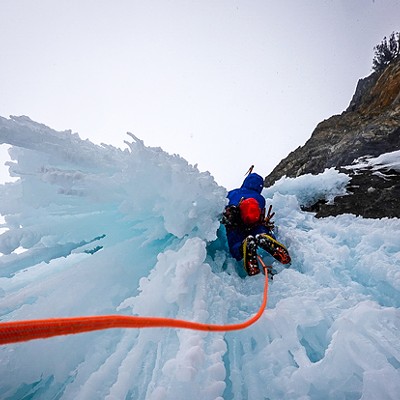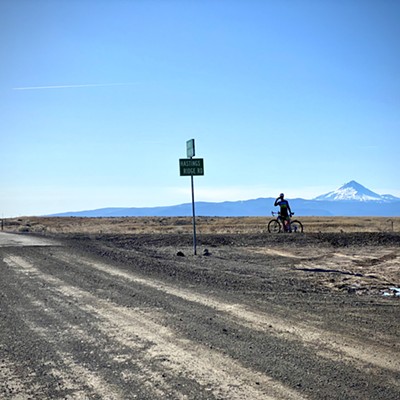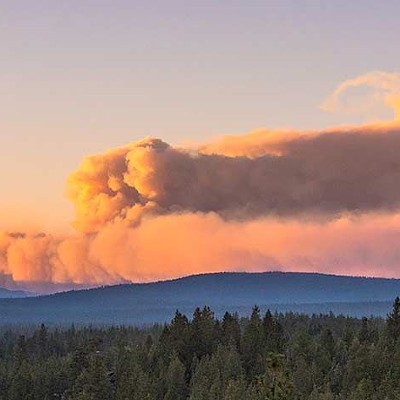Findings of climate research being done by the U.S. Forest Service's Pacific Northwest Research Station may eventually change the way Central Oregonians recreate. For two years, the research station has worked with resource managers in the Deschutes, Ochoco, and Fremont-Winema National Forests to study climate change affects on water, fish, vegetation, wildlife, and recreation on public lands. The research is led by Nobel Laureate David Peterson, who shares the 2007 Nobel Prize for his contributions on climate change, and Jessica Halofsky, a researcher at the University of Washington.
"Everyone is very concerned about water in the future," says Peterson, who holds a doctorate in forest ecology. "This is already a fairly arid region that we expect to get drier in the future." That will affect water supplies, fish and people's access to recreational opportunities, he says.
Globally, Peterson says, temperatures have risen approximately 1.5 degrees Fahrenheit since the mid-20th Century, and that is consistent in Central Oregon. "The biggest direct impact we're seeing here and across the West is reduction of snowpack, and that's only going to get worse as time goes on," he says.
Peterson says the low snowpack of 2015 and the ensuing drought serve as a wakeup call. "A lot of climatologists think that 2015 might be a window into the future – kind of a new normal after about mid-century. How will we manage this and adapt if it isn't just a once-in-a-lifetime thing and starts to occur more frequently?" he asks. He and Halofsky discussed early findings on key vulnerabilities due to climate change at a workshop for resource managers held at Eagle Crest.
Halofsky, who has a doctorate in forest science, foresees that Central Oregonians will have to pay closer attention to water concerns that will impact the forests and grasslands of Central Oregon. She expects more wildfires and insect outbreaks in the forests as temperatures rise. Halofsky says their research shows increasing temperature trends across the board with a high degree of certainty. "We expect decreased snowpacks particularly at lower and mid-elevation places that don't often have a lot of snow." These elevations, she says, may lose snow entirely in the future.
Peterson acknowledges variations in climate over thousands of years. What is different now, he says, is how carbon dioxide in the atmosphere is increasing rapidly, forcing temperatures to also rise "faster than it's ever occurred in millions of years when there weren't seven billion people populating the planet."
The two researchers say it will be critical how public land managers use this information in the future, and they offered some thoughts on how it may impact recreation. "We expect longer spring, summer, and fall recreation seasons with higher temperatures," Halofsky explains. "More people will want to access the national forests in early spring or late fall." Halofsky expects winter recreation seasons to shorten with lower snowpacks. "People may have to travel further to find snow."
Peterson says the challenge for public resource managers will be to build flexibility into recreational schedules. "There are standard seasons for fishing and hunting, and it's an open question whether the availability of fish and big game is going to be compatible with current hunting and fishing seasons. That's a great uncertainty for the future," he says.
Even though the research shows warming temperatures and reduced snowpacks in the future, Holofsky remains optimistic. "I see a lot of good resource managers who are working hard to try to respond to this. I think we can do some things to help reduce some of the negative impacts."
Peterson says it will be crucial how managers of public lands will accommodate the droughts and higher temperatures. For the sportsmen and women, he says flexibility will be the key to continued recreational pursuits. "I do believe that people who engage in these activities are extremely adaptable. If I don't find snow here, I'll go somewhere else. If I can't find fish here, I'll find another stream that has them."
Increased Central Oregon population projections may strain necessary resources, including water. According to the Portland State University Census Data Center, the population in Deschutes, Crook, and Jefferson counties will double in the next 50 years. In 2015, the population of the three counties was 210,000. PSU forecasts the 2065 population will reach 416,000.
Public agencies such as the U.S. Forest Service, the BLM, and others have formed the South-Central Oregon Adaptation Partnership to seek solutions for coping with the effects of a warmer climate on public lands. Before the research findings are made available, they will be peer reviewed.
More information can be found at adaptationpartners.org/scoap/.

























